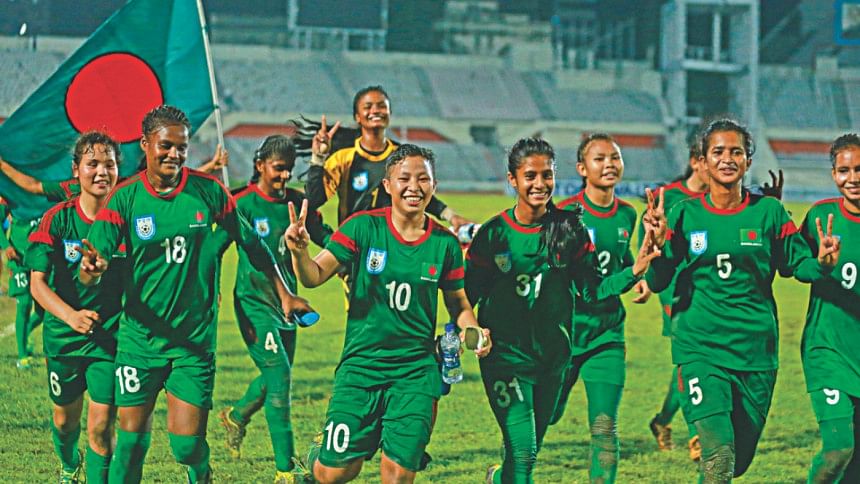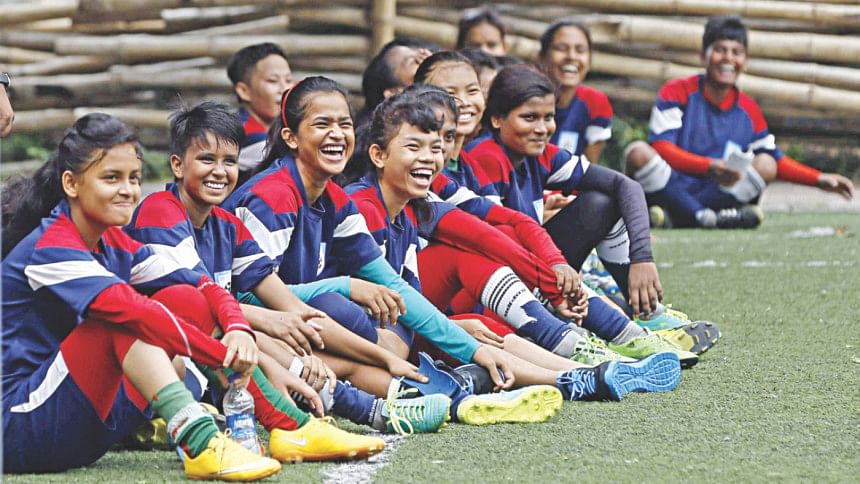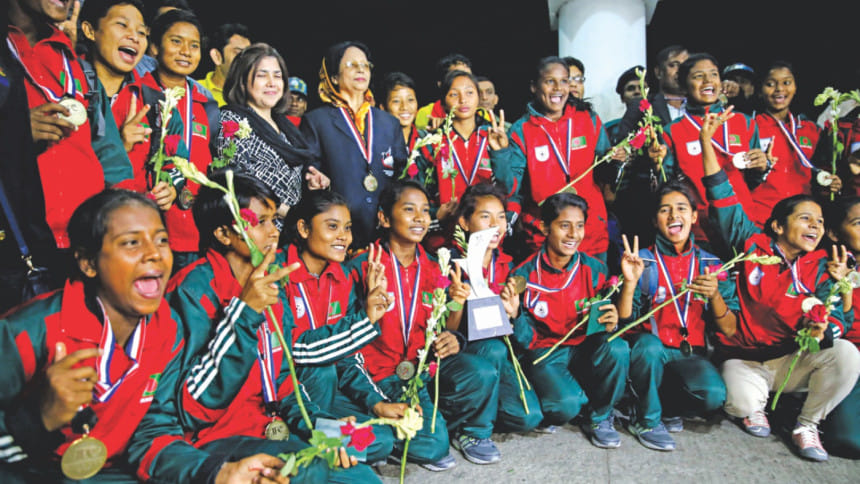Developing young athletes

The importance of building a good pipeline that continuously supplies fresh talent can perhaps best be answered by a mere glance at the two most popular sports of Bangladesh.
Back in 2011, when Mohammad Mofizuddin of the Kalsindur Government Primary High School set out to form a girls' football team, he didn't really expect his girls to surpass boundaries and go all the way to play for the national team.
Back then, he just wanted to form a team for the Bangamata Gold Cup, a football tournament for school girls that was just about to make its mark. He used to be a good football player as a youngster and all he wanted to do was pass on something that he understood well to his girls.
It wasn't easy. He faced threats, parents weren't keen on sending their girls to play a 'man's game,' and then there were the perennial pessimists around the region who never missed an opportunity to discourage Mofizuddin and his girls.
However, Mofizuddin received plenty of support from his school. The school's principal ensured that they kept the programme running, and at the end of the first year, they managed to make a small group of 17 players.
These girls defied traditional norms and practiced day and night. They even practiced on Eid and refused to take holidays. Their determination surprised Mofizuddin himself. The school from a remote corner of the country ended up winning the Bangamata Gold Cup in 2013 and in 2014.
The seeds of the glorious moment that the Bangladesh girls enjoyed later on were sown in this corner of the country. It's true that girls from several other schools and areas went on to represent Bangladesh, but a huge portion of today's Bangladesh national team has come from this school.
After winning the Bangamata Gold Cup, the children became a lot more encouraged. They saw football as a means of escape from their miseries, miseries that could have been anything from poverty to child marriage.
And as the years passed by, the number of students willing to play football increased. From the Kalsindur Government Primary School, these girls went on to play for Bangladesh's Under 14 and then the Under 16's, winning trophies at both levels. Eventually they ended up in the national team and continue to dominate there.
The case of the Kalsindur Government Primary School destroys a popular concept, which states that the most populated regions around the world are more probable to produce better talent.
Kalsindur is just a small school located in one of the most remote areas of the country. However, with enough support and encouragement, they managed to change, in a sense, the entire meaning of football.
This is essentially what happens in the pipeline. It's quite difficult at the start, but once you get the cogwheels churning, it will take a lot of force to stop it. Once the girls from Kalsindur started winning and receiving public acclaim, everybody wanted to take up that path. Football encouraged them and gave them a sense of hope. And with Mofizuddin ensuring a skilful programme, the hunger never died.

Cricket witnessed a similar turnover in Bangladesh back in the day. Yes, there was plenty of love and the sport was very popular. However, we lacked a proper system in the initial days and it won't be wrong to state that we were pushed quite early to the top most tier of test cricket.
However, after the difficult years had passed, Bangladesh gradually began to win at the age-level tournaments. The likes of Shakib Al Hasan, Mushfiqur Rahim and Tamim Iqbal were quite popular even before they entered the national team and that was because they were used to winning in the age-level matches.
Today the age-level contests are a lot more competitive than the batch that gave birth to the likes of Shakib and Mushfiqur, and as a result, Bangladesh is churning out star cricketers one after the other.
Yes, there's a huge difference between age-level cricket and national cricket, but even that's going to change with time. That's a matter of crossing a barrier. At the moment, the Bangladesh cricket team is crossing barriers almost every season, and make no mistake, every positive step that they take will only further encourage age-level cricketers.
For a sport to develop, you need the youngsters to love the game first. That love arrives when they see results. In the case of the girls from Kalsindur, several of them joined Mofizuddin's team after their seniors won the Gold Cup. With regards to cricket, there were many highlights.
One of the top highlights would be Shakib Al Hasan. The cricketer has gone on to do things that no Bangladeshi cricketer could have imagined of doing in the past. It's not a coincidence that there are a number of spinning all-rounders in Bangladesh's pipeline. It is because they are particularly inspired by someone they love.
The second step would be to provide the youngsters with a place to play the sport that they love. The Kalsindur girls got that and so did a majority of the cricketers who lived outside Dhaka. Again, it's not a coincidence that a huge number of national cricketers are from outside the capital.

Mustafizur Rahman used to play cricket with a taped tennis ball in his village in Tetulia, Shakib Al Hasan was a restless child in Satkhira and only realised his talent once he joined the Bangladesh Krira Shikkha Protisthan.
Unfortunately, the urban areas haven't been able to provide that space. Just think about it, youngsters are compelled to run around on their terraces or are compelled to rely on digital games these days.
These may seem like small factors, but this is where it should begin.
Structures and policies are perhaps more important, but they start to matter at a later stage. Take for instance the case of hockey in Bangladesh. One can't expect them to do well if you aren't able to host a domestic tournament for years.
This in turn discourages youngsters to take up hockey as a professional sport and compels them to focus on something else.
The government has a huge role to play here. One needs to understand that sports in Bangladesh does not mean cricket. A one dimensional approach can never be a good thing.
Policies that help Bangladeshis target medals in international events should be maintained. If we don't, we are bound to lose out on a number of talented athletes.
The writer is a sports reporter at The Daily Star.

 For all latest news, follow The Daily Star's Google News channel.
For all latest news, follow The Daily Star's Google News channel. 



Comments